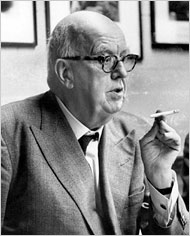My knowledge with medical technologies in relation to the artist projects I have seen is embedded within the readings. For example, in the reading “The Hippocratic Oath,” is one of the oldest binding documents in history. Some of its principles are held sacred by doctors to this day. Including, treating the ill to the best of one’s ability, preserve patient privacy, and to teach the next generation. But, on the other side of this oath, some doctors saw it with little value. They began to ask questions, questions based on religions, etc.
Reading, “The Architecture of Life,” also gave me knowledge with medical technologies in relation to the artist projects. For example, in this reading it gives a definition of tensegrity, in which relates to the question of how living things form has less to do with chemical composition than with architecture. In this reading, it said, “it is the maintenance of pattern and architecture.” This spoke to me because, it is not only the science behind it, but along with the artistic vision and architecture.
My experience with medical technologies and art consists of the idea of plastic surgery, and why everyone has the urge to try this artwork. I researched the definition of plastic surgery, and it gave me: surgery that improves or repairs the form or appearance of body parts. This proves to me that this medical procedure is linked to art by sculpting the facial or body parts to make them appear better. I thought this subject is related to what we are talking about in this class. To make my point for this idea of plastic surgery, banks are offering loans for plastic surgery. To me, we need to rethink our ideas as a society of what beauty "looks" like.
"Volume and Definition." Cosmetic Surgery, Plastic Surgery, Practice Management, Surgical Aesthetics. Web. 25 Apr. 2016.
Merriam-Webster. Merriam-Webster. Web. 25 Apr. 2016.
Tyson, Peter. "The Hippocratic Oath Today." PBS. PBS, 2001. Web. 25 Apr. 2016.
Uconlineprogram. "Body Medicine Intro." YouTube. YouTube, 2012. Web. 25 Apr. 2016. <https://www.youtube.com/watch?v=zEgn-fZQ8po>.
Uconlineprogram. "Medicine Pt1." YouTube. YouTube, 2012. Web. 25 Apr. 2016. <https://www.youtube.com/watch?v=Ep0M2bOM9Tk>.
Uconlineprogram. "Medicine Pt2." YouTube. YouTube, 2012. Web. 25 Apr. 2016. <https://www.youtube.com/watch?v=psjnQarHOqQ>.
Uconlineprogram. "Medicine Pt3." YouTube. YouTube, 2012. Web. 25 Apr. 2016. <https://www.youtube.com/watch?v=FIX-9mXd3Y4>.
Uconlineprogram. "Medicine Pt3." YouTube. YouTube, 2012. Web. 25 Apr. 2016. <https://www.youtube.com/watch?v=FIX-9mXd3Y4>.
"{{ $root.pageTitle }}." Ideapod. Web. 25 Apr. 2016. <https://www.ideapod.com/idea/Banks-offer-loans-for-plastic-surgery-We-need-to-re-think-the-cost-and-definition-of-beauty/527925187765621540100000>.
